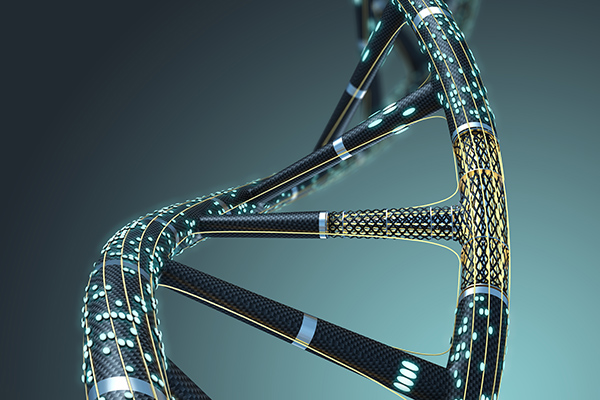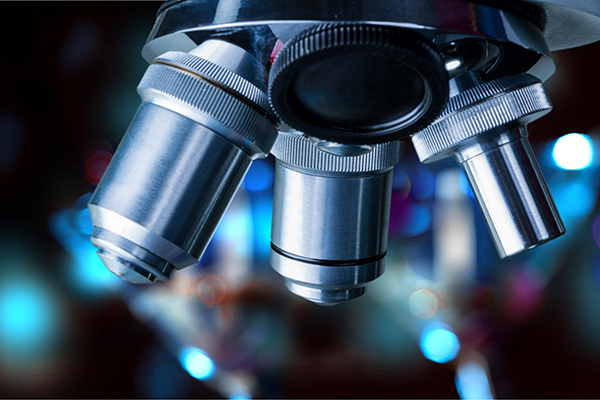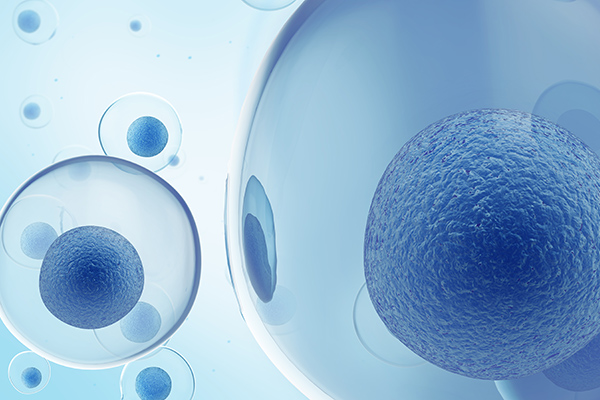
Nanobiotechnology
Nanobiotechnology (bionanotechnology, nanobiology) are terms that refer to the intersection of nanotechnology and biology working at a nano-scale of around 10-100nm. To put that in perspective: the diameter of a single piece of human hair is around 100.000nm.
Nanobiotechnology can provide powerful new imaging and detection tools that allow more detailed examination of biological processes and support the detection and targeting of diseases. Atomic force microscopy for example can analyze the functions of proteins and bacteria, and gold nanoparticles have been used to detect tumours.
In Nanomedicine, the ability to manipulate many of the physical properties of nanomaterial can allow for great advances in drug delivery, aiming at maximizing bioavailability, both at specific places in the body and over a controlled period of time. Nanomaterials can also learn from the incredible structural and functional complexities of natural biological systems to improve their properties even further. Bionanotechnology is a cross-disciplinary field spanning from biology and engineering to chemistry and the environment. It is opening new frontiers regarding the way we see life sciences.
Nanobiotechnology can provide powerful new imaging and detection tools that allow more detailed examination of biological processes and support the detection and targeting of diseases. Atomic force microscopy for example can analyze the functions of proteins and bacteria, and gold nanoparticles have been used to detect tumours.
In Nanomedicine, the ability to manipulate many of the physical properties of nanomaterial can allow for great advances in drug delivery, aiming at maximizing bioavailability, both at specific places in the body and over a controlled period of time. Nanomaterials can also learn from the incredible structural and functional complexities of natural biological systems to improve their properties even further. Bionanotechnology is a cross-disciplinary field spanning from biology and engineering to chemistry and the environment. It is opening new frontiers regarding the way we see life sciences.
New Therapies: Nanotechnology provide possibilities for new therapies in healthcare with targeted drug delivery (e.g. overcoming the blood-brain barrier to cure neurodegenerative diseases), blood purification or medical devices.
Nanotoxicity: The tiny size of nanomaterials means that they are much more readily taken up by the human body than larger particles leading to possible toxic effects if they end up in wrong places. We need to better understand how these nanoparticles behave inside our body for using them safely.
Environmental Protection: It is currently difficult to precisely predict or control the ecological impacts of the release of nano-products into the environment. Hence, we need more knowledge in the environmental impact.
Nano sensors, Tissue engineering, Biomimetic, Nanomaterials, Nano-submarine, Neuro-electronic interface, Nano array, Nanorobotics
Related Topics
 EN
ENInternet Of Things
The "Internet of Things" is the network of physical objects such as devices, vehicles, buildings and other items that are embedded with electronics...
READ MORE

Nanotechnologie: Große Wirk...
Von Kleidung und Sonnenbrille bis zu Computer-Hardware und Reinigungsmitteln: Nanotechnologie spielt eine wichtige Rolle bei der Herstellung vieler...
READ MORE
 EN
ENStem Cells
Stem cells have two defining capabilities that make them unique: first they are able to generate new copies of themselves (self-renewal) and second...
READ MORE




